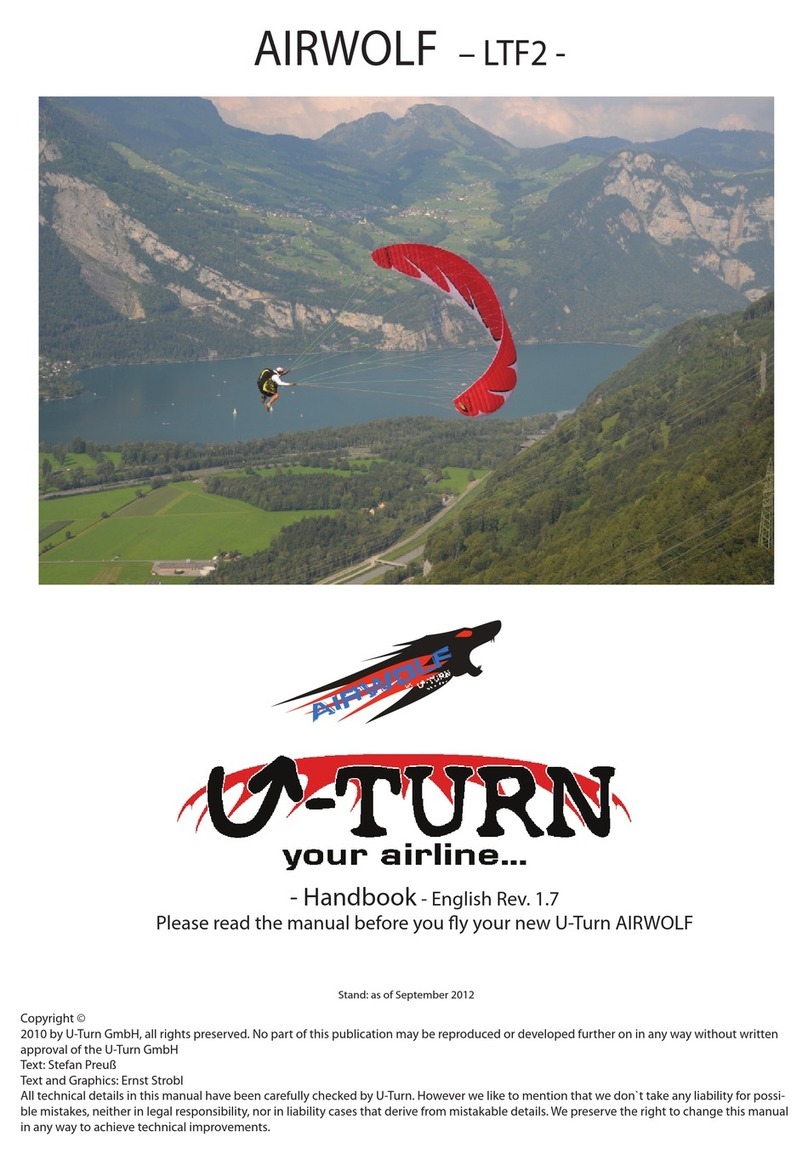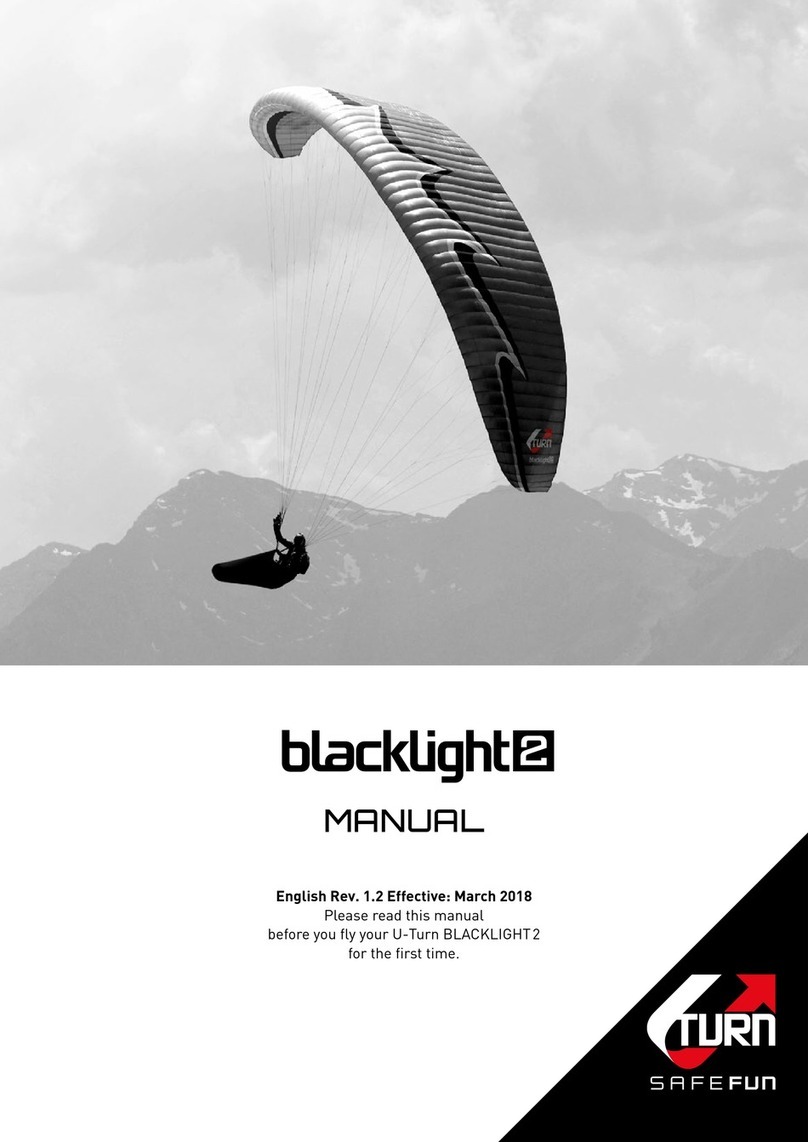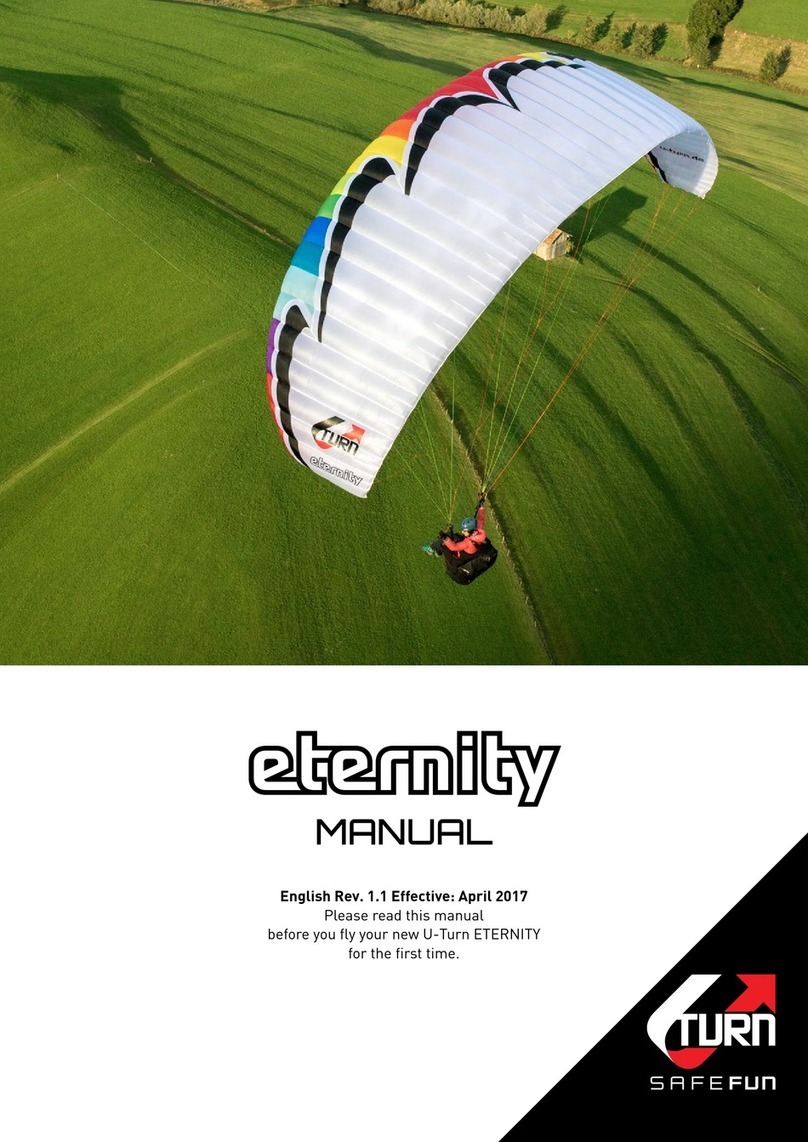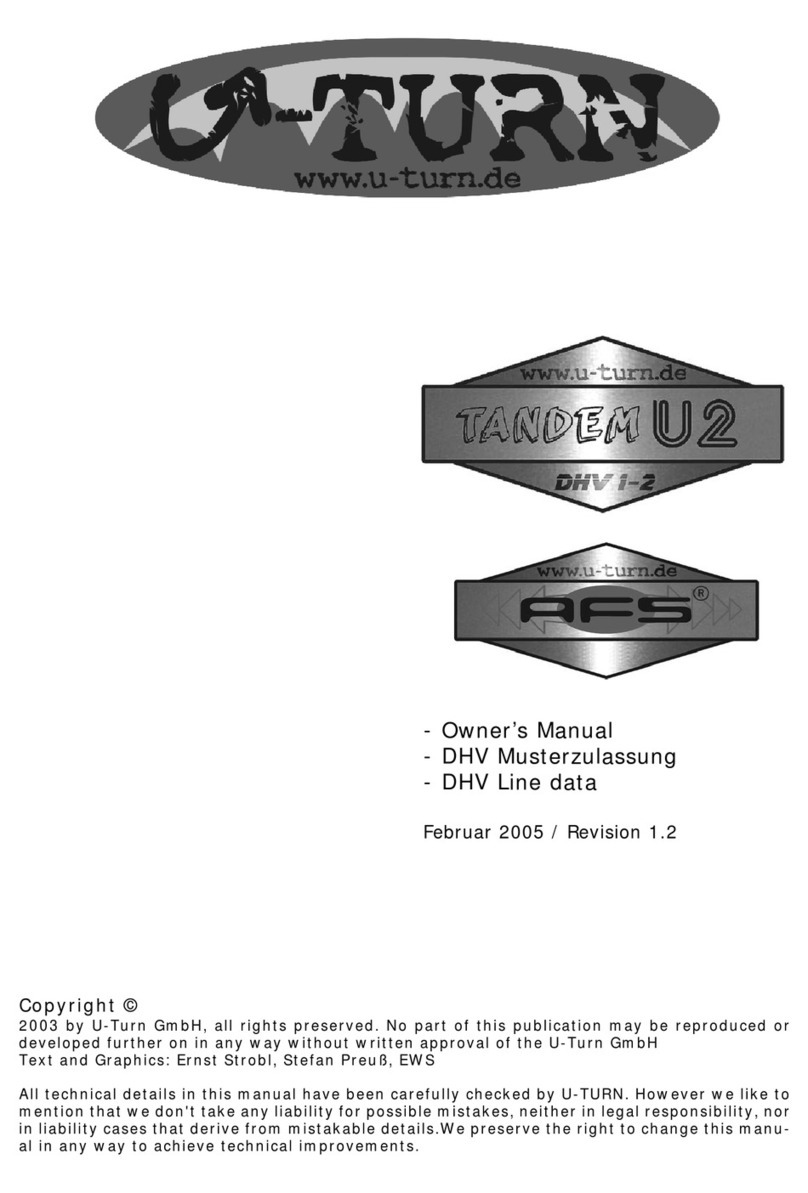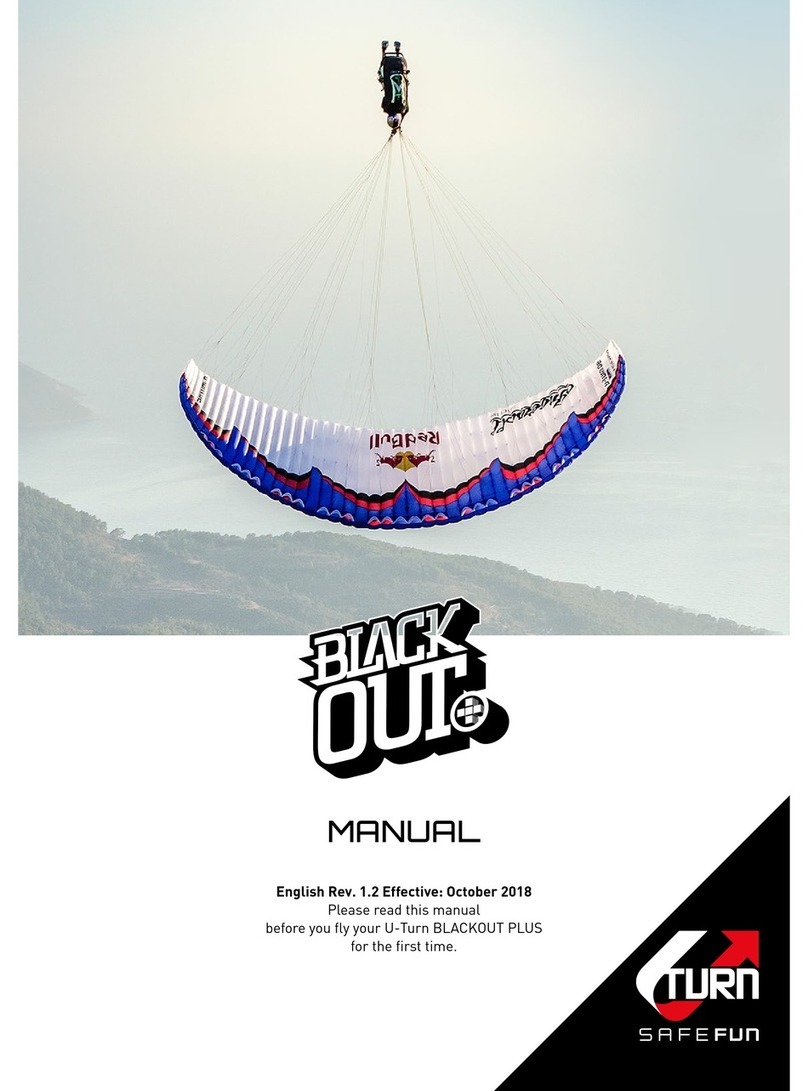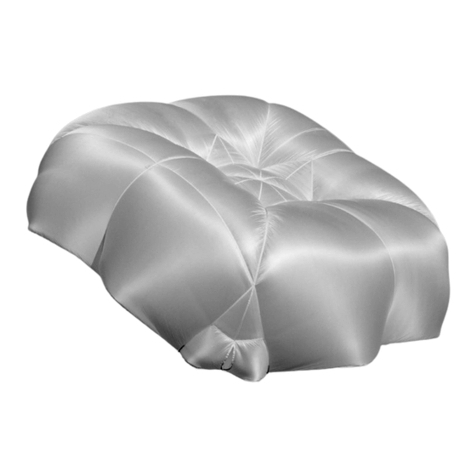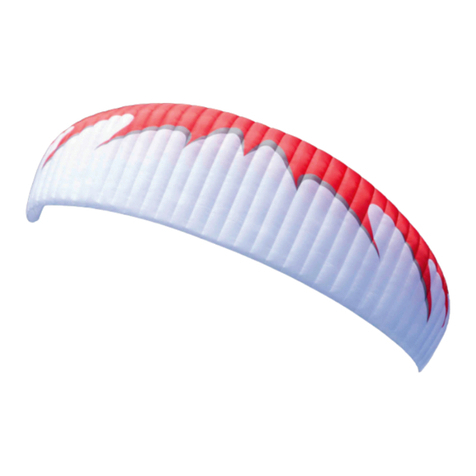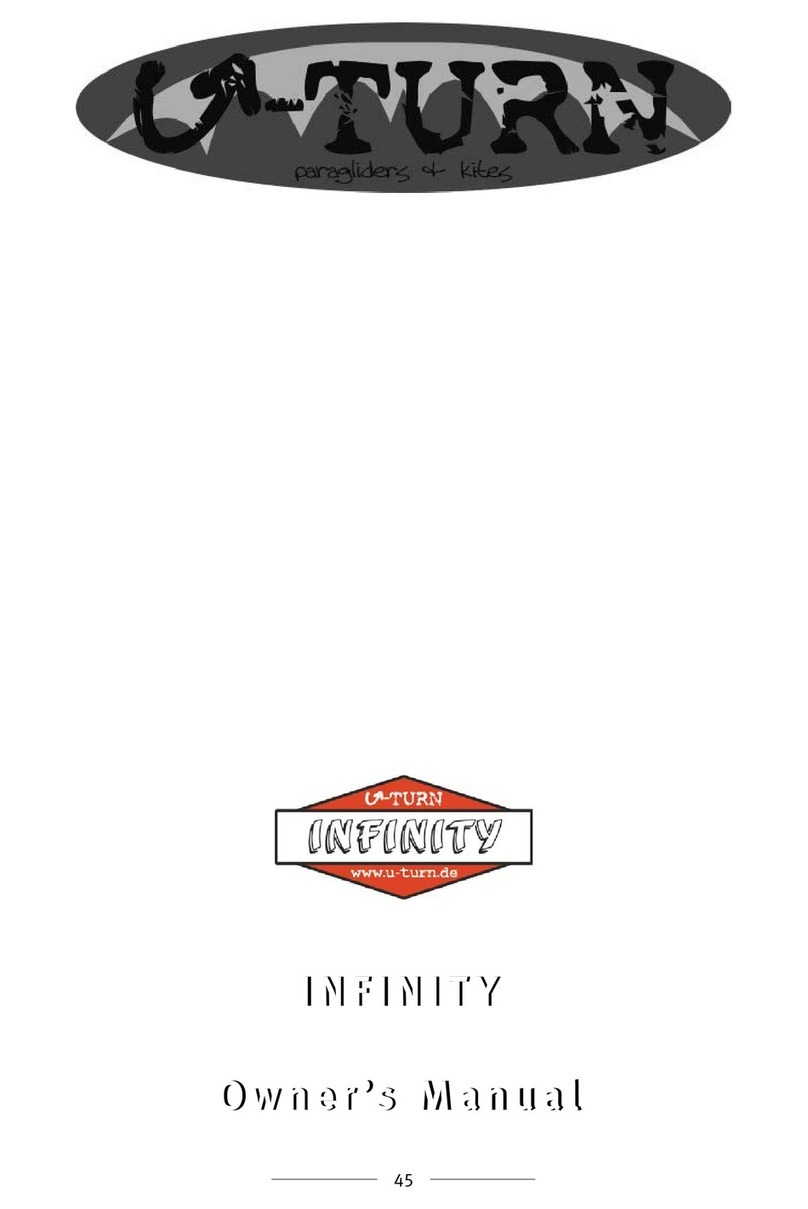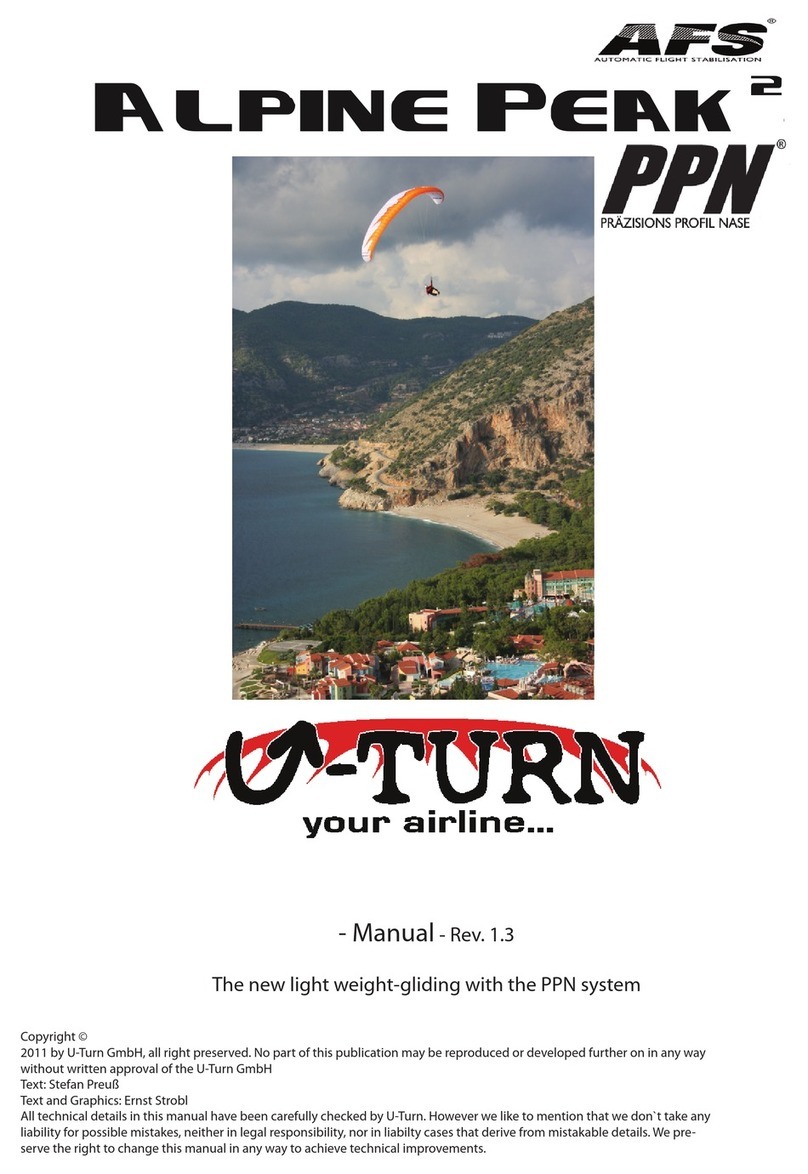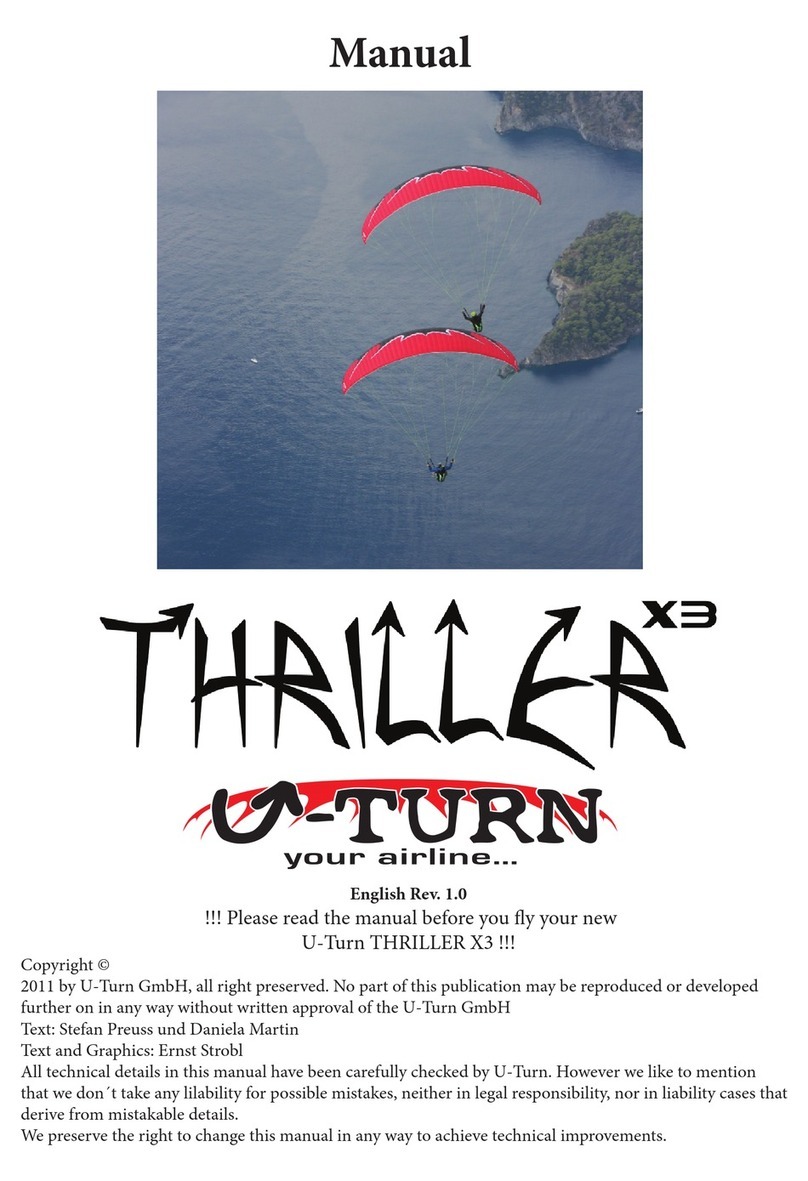e U-Turn BLACKLIGHT
To make high-tech from acro and competition wings accessible for leisure pilots- that’s the way U-
Turn goes with the new BLACKLIGHT. e latest design of chief designer Ernst Strobl is now available
in 4 sizes- all are certied to EN/LTF B. An immense performance combined with certied safety.
„To say it straight away: All of the certication ights are made with the serial line setup,“ says Strobl.
e designer dislikes certication with so called folding lines in the EN-B class because they fake a
safety level not existing in reality. But obvious is, that the BLACKLIGHT has a very well-thought-out
line conguration. “For the main lines we use only Aramid/Kevlar lines in 11 dierent diameters” so
Strobl. Each line is calculated exactly to its demanded strength to use the maximum potential of the
wing. “e thinnest line on the wingtip got a diameter of 0.55mm, the strongest one in the middle of
the wing 1.7mm.” Because of the 2-lines system of the wing the total line length could be minimized to
211meters for BLACKLIGHT S and 267m for BLACKLIGHT L.
e BLACKLIGHT is- like the successful PASSION in the EN/LTF C class- equipped with the High
Denition Prole (HDP). HDP means thin plastic rods on the topsail which cover from 45 to 80%
of the prole depth. e optimum of this technology was found in numerous test ights in dierent
prototype design steps.
e system corresponds perfectly with the High Pressure Crossport Design (HPCD) which means op-
timal designed cross ventilation openings in the ribs, which gives a dynamic handling but with a high
stability. is technology is borrowed from the THRILLER and is now used in serial gliders.
e BLACKLIGHT got 50 cells and an aspect ratio of 5,8. Another fact for the high performance of the
wing is the use of supreme NCV fabric material. In the topsail type 40gramm is used in water repellent
quality and Skytex type 36 in the bottomsail. Elaborately is the conception of the ribs, there is type 32
Skytech material in hardnish-quality build in.
e PPN-system instead of the heavy nose mylar gives easy starting characteristic, “and thermaling
the wing is just a dream” so Strobl. e BLACKLIGHT turns willing in the thermal updra and gains
rapidly altitude. “In the end I can only advice to test the BLACKLIGHT and to experience the glide of
10 on an EN/LTF B wing.”
e wing is certied in the known wide U-Turn weight range. ese are 60 - 90kg for BLACKLIGHT
S, 75-100kg for BLACKLIGHT SM, 85-110kg BLACKLIGHT M and 100-125kg for BLACKLIGHT L
Usage
e BLACKLIGHT is only designed for solo usage. e BLACKLIGHT is a light aircra with a mass of
less than 120 kg in the class of paragliders.
Motorised Paragliding
e U-Turn BLACKLIGHT is suitable due to it`s excellent launching characteristics and uncomplica-
ted handling in ight and high trim speed, especially good for motorized use.
Please keep in mind is that during motorized use NO ACRO MANEUVERS are allowed.
e extreme high wing loading due to the additional weight of the engine will push the
U-Turn BLACKLIGHT to the brink of its load limits. No U-Turn BLACKLIGHT has a motorized
endorsement.
Page 3
